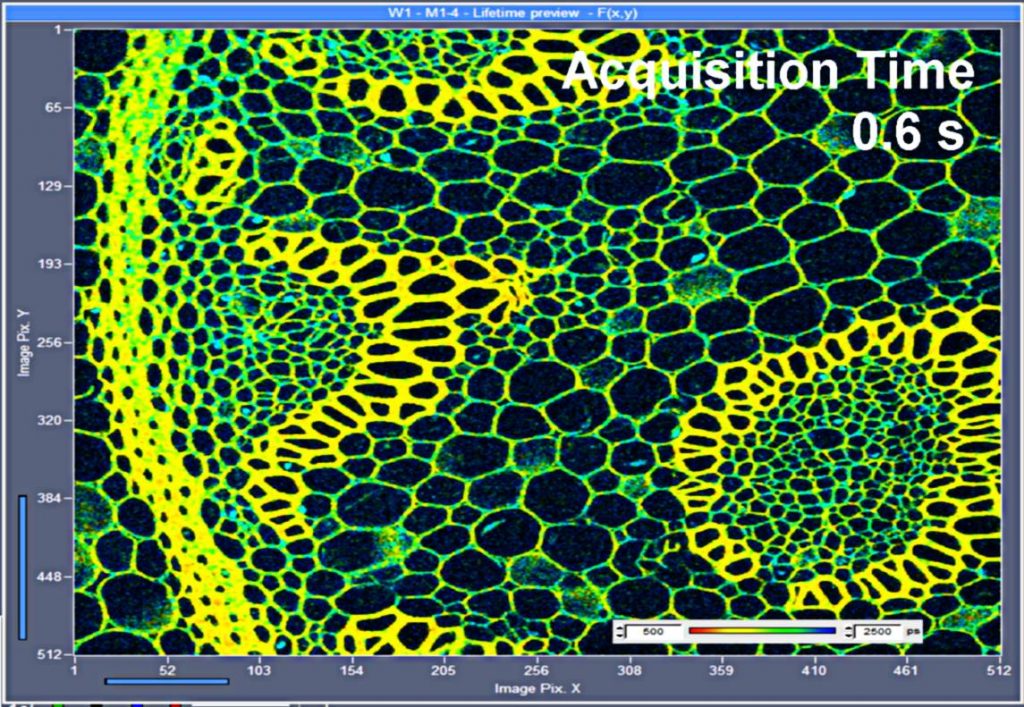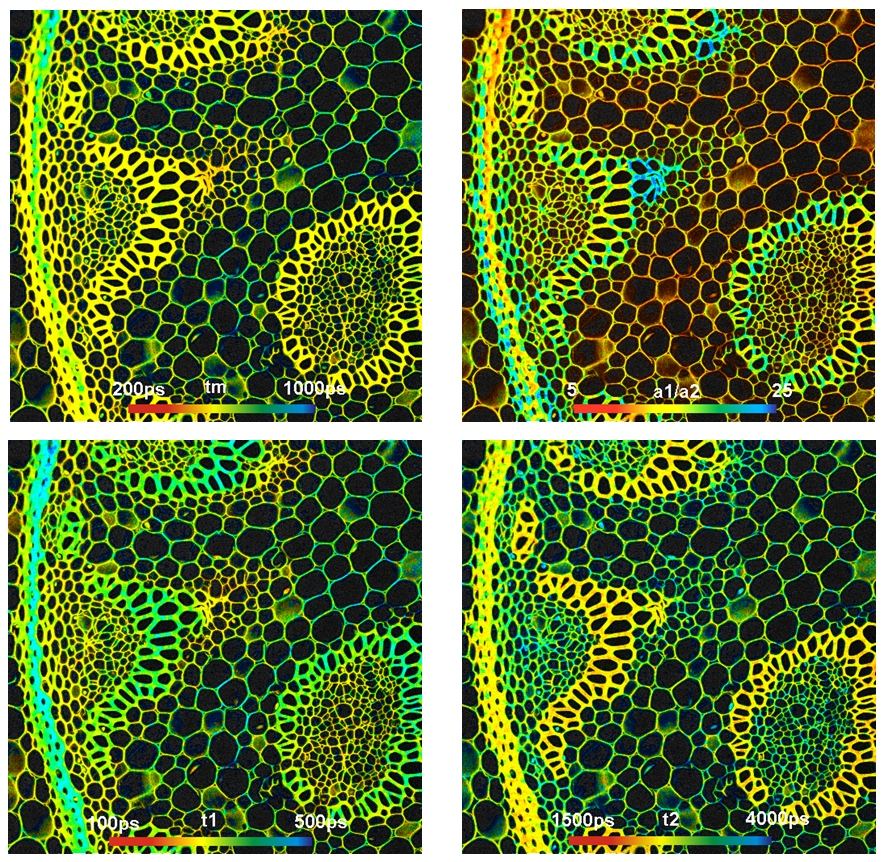
Principles
FASTAC Fast Acquisition FLIM
There is currently a run towards faster and faster acquisition of Fluorescence Lifetime Imaging (FLIM) data. Fast-FLIM techniques normally use time-gating into only a few time windows, or a multichannel scaler process with a time-channel width in the 200-ps range or longer. Compared with TCSPC FLIM, the time resolution, both in terms of IRF width and time channel width, is much lower, and the ability to resolve multi-exponential decay profiles into their components is limited. However, in typical FLIM applications, such as FRET imaging or metabolic imaging, exactly these features are important. In FRET data, the interacting donor fraction has to be separated from the non-interacting one, and metabolic imaging is based on the separation of the decay components of bound and free NADH. Moreover, typical FLIM experiments have to be performed on samples with low fluorophore concentration and fluorophores of sub-ideal quantum efficiency. The number of photons that can be obtained from these samples is limited. Photon efficiency, i.e. the number of photons required for a given signal-to-noise ratio of the fluorescence lifetime, is therefore an important – if not the most important – parameter of a FLIM technique.
The bh FASTAC system achieves fast FLIM acquisition without compromises in time resolution and photon efficiency. It uses a single detector, four parallel TCSPC channels, and a device that distributes the photon pulses into the four recording channels. The system has an electrical IRF width of less than 7 ps (FWHM), and a time channel width down to 820 fs. The optical time resolution with an HPM-100-06 hybrid detector is shorter than 25 ps (FWHM). The principle is shown in the figure below.

The figure below shows an image if a convallaria sample recorded within 100 ms. From left to right, the figure shows the FLIM image, decay curve in 5×5 pixel area and a decay curve over entire image. The image and the curves were created by the online display functions of the SPCM software.

Due to its high time resolution, the system can also be used for precision FLIM applications. The figure below shows double-exponential decay analysis of a convallaria FASTAC FLIM image. The images show the amplitude-weighted lifetime of the double-exponential decay, the ratio of the amplitudes of the decay components, and the lifetimes of fast and the slow decay components. The data were recorded with an acquisition time of four seconds. The FASTAC system was used in combination with a Zeiss LSM 880 NLO two photon microscope.

With its high time resolution, high photon efficiency, short time-channel width, and capability to resolve multi-exponential decay profiles the bh FASTAC system is equally suitable for fast-acquisition and for precision FLIM applications.
For more information please see application notes:
